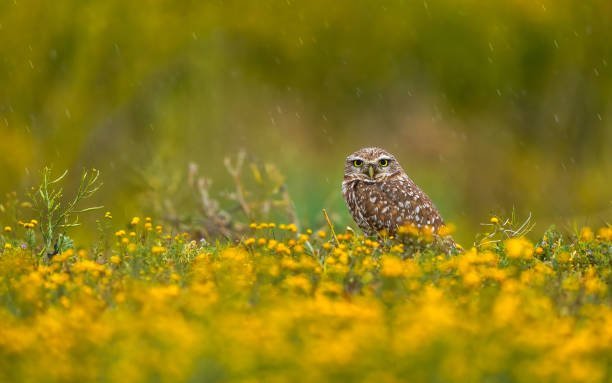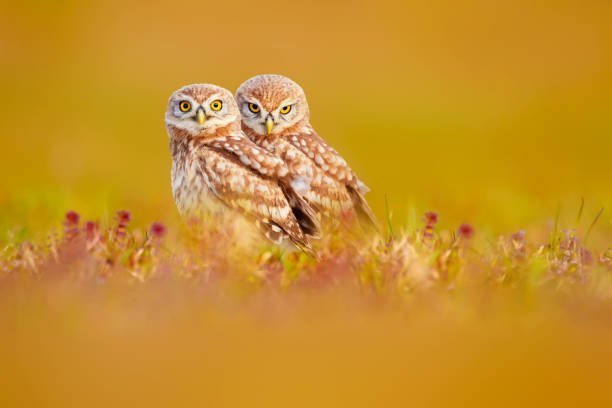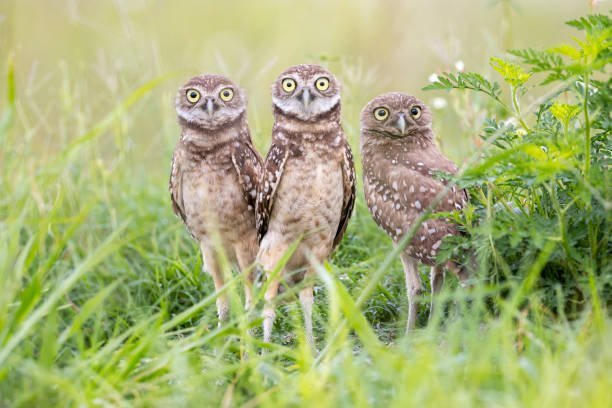How do owl rescuers ensure the successful reintegration of healed owls into the wild?

Introduction:
In this article, I’ll explore the fascinating world of owl rescuers and their remarkable efforts to ensure the successful reintegration of healed owls into the wild. Owls, with their enigmatic beauty and silent flight, have long captured the human imagination. However, when these magnificent creatures encounter injuries or illnesses that hinder their survival in their natural habitats, it falls upon dedicated individuals and organizations to come to their aid.
Owl rescuers, often unsung heroes of the avian conservation world, face the challenging task of not only nursing these injured owls back to health but also preparing them for a safe return to their wild homes. This delicate process involves a combination of medical care, behavioral rehabilitation, and expert knowledge of owl ecology. By delving into the methods and techniques employed by owl rescuers, we can gain a deeper appreciation for the vital role they play in preserving these majestic raptors and maintaining the delicate balance of our natural ecosystems.
Health assessment and treatment:
The first crucial step in the process of reintegrating healed owls into the wild is a comprehensive health assessment. When an injured or sick owl is admitted to a rehabilitation center, trained professionals conduct a thorough examination to diagnose its condition. This assessment typically includes a physical examination, blood tests, radiographs, and other diagnostic procedures. The aim is to identify any injuries, illnesses, or parasites that may hinder the owl’s ability to survive in the wild.
Once the health issues are identified, the next step involves providing appropriate treatment. This can range from administering medication for infections or injuries to performing surgeries if necessary. Additionally, veterinarians and caretakers work to ensure that the owl is in optimal physical condition. This often involves a period of rest and recuperation in a controlled environment, as it is essential that the owl is completely healed before progressing to the next stages of rehabilitation.
As the owl’s health improves, the team of rescuers continually monitors its progress, adjusting treatment plans as needed. The ultimate goal of this phase is to ensure that the owl is free from debilitating health issues and physically prepared for life in the wild.
Behavioral rehabilitation:
Healing a physically injured owl is just one part of the equation; rescuers must also address the owl’s behavioral needs. Owls that have been in captivity or have undergone medical treatment may have lost some of their natural behaviors, making it crucial to rehabilitate them psychologically.
Behavioral rehabilitation often includes activities that mimic natural owl behaviors. These activities can encompass exercises that build strength, encourage flight, and enhance hunting skills. To achieve this, owls are placed in environments that resemble their natural habitat as closely as possible. This means providing suitable perches, space for flight, and opportunities for the owl to practice hunting, even if this involves controlled interaction with live prey. The process is highly individualized, as the specific needs and progress of each owl can vary greatly.
Furthermore, minimizing human contact during this phase is essential to prevent owls from becoming overly comfortable around humans. This will help ensure that the owl retains its natural wariness and does not rely on human interaction for survival. Behavioral rehabilitation is a delicate balance that combines naturalizing behaviors while minimizing stress, all with the ultimate goal of preparing the owl for life in the wild.
Adequate nutrition and conditioning:
Adequate nutrition and conditioning are vital elements of owl rehabilitation. During their time in captivity, it’s crucial that owls receive a balanced diet that closely replicates their natural prey. The diet provided should be high in quality and nutrition to support healing and strengthen the owl’s overall health. The types of prey offered can vary depending on the owl’s species, age, and specific dietary needs. Owl rescuers often collaborate with local experts to ensure that the owls are provided with the most appropriate and natural diet available.
In addition to nutrition, conditioning plays a key role in preparing owls for life in the wild. This process may involve activities that help the owl regain or develop essential hunting and foraging skills. Exercise is crucial for owls to build strength, increase stamina, and fine-tune their flying abilities. Encouraging natural behaviors such as hunting and foraging is essential for their survival once released.
A critical aspect of conditioning is gradual exposure to the environmental factors they will encounter in the wild. This can include exposure to the changing seasons, variations in temperature, and other natural challenges that wild owls routinely face. Adequate nutrition and conditioning are intertwined aspects of the rehabilitation process that ensure the owl’s readiness for reintegration into its natural habitat.
Isolation from human contact:
To successfully reintegrate healed owls into the wild, it’s crucial to minimize human contact during their rehabilitation. Owls are wild creatures, and human interaction can lead to dependency and a reduced ability to fend for themselves in the natural environment. Therefore, once initial treatment and care are provided, owls are isolated from human contact as much as possible.
This isolation is maintained to ensure that the owls retain their natural instincts and behaviors. Rescuers limit direct interaction and keep visual contact to a minimum. Furthermore, any contact with humans should be associated with minimal stress to avoid habituation.
Owls must maintain their natural wariness and hunting skills, which can be compromised when they become too accustomed to human presence. Rescuers carefully balance this need for isolation with the care required to monitor the owl’s progress and overall well-being.
Controlled pre-release environment:
Before releasing a healed owl into the wild, rescuers provide a controlled pre-release environment to help ease the transition. This phase serves as a final step in the rehabilitation process, allowing the owl to adapt to its natural surroundings in a controlled and secure setting.
The pre-release environment is carefully selected to mimic the owl’s native habitat as closely as possible. This may involve a rehabilitation center with outdoor aviaries designed to resemble the wild environment, complete with suitable perches and vegetation. Owls are gradually introduced to this environment, allowing them to familiarize themselves with the sights, sounds, and smells of the wild.
During this phase, owls have the opportunity to redevelop their hunting skills by providing them with live prey or other natural foraging opportunities. Caretakers closely monitor their behavior and adapt the environment to suit each owl’s specific needs.
This controlled pre-release environment not only helps the owls regain their natural instincts but also allows rescuers to assess their readiness for release, ensuring that they are capable of surviving independently once returned to the wild.
Simulated hunting and foraging:
Simulated hunting and foraging activities are a pivotal aspect of the rehabilitation process. To equip healed owls for successful reintegration into the wild, it is essential to provide opportunities for them to practice and refine their hunting and foraging skills. This phase helps owls regain their self-sufficiency and prepares them for the challenges of finding food in their natural habitat.
Rescuers aim to create an environment that closely replicates the conditions in the wild. This includes introducing live prey for the owls to hunt, encouraging them to stalk, pounce, and capture prey as they would in their natural setting. In some cases, caregivers may use tools and techniques to simulate hunting activities, such as hiding food items for the owls to discover or using objects that mimic natural prey.
Simulated hunting and foraging serve multiple purposes. They help owls rebuild their physical strength and agility, improve their hunting instincts, and ensure they are capable of catching prey efficiently. This phase also allows rescuers to assess an owl’s ability to fend for itself and determine if it is ready for the challenges of life in the wild.
Monitoring and evaluation:
Throughout the entire rehabilitation process, meticulous monitoring and evaluation are essential to track the owl’s progress, well-being, and readiness for release. Dedicated professionals closely observe the owl’s behavior, health, and adaptation to the controlled pre-release environment.
Continuous monitoring includes regular health check-ups to ensure that any underlying health issues do not resurface. Observations of the owl’s behavior and interaction with the environment are crucial in assessing its readiness for reintegration into the wild. For instance, a successfully rehabilitated owl should display natural hunting behaviors, exhibit a level of wariness toward humans, and adapt well to the pre-release environment.
Evaluations are also conducted to gauge the owl’s physical fitness and ability to cope with changing weather conditions, especially if the owl will be released back into its natural habitat. A variety of factors, such as age, species, and the circumstances that led to its rescue, influence the pace and progress of rehabilitation.
The information gathered through monitoring and evaluation guides the decision of when and where to release the owl. It is vital to ensure that the owl is fully prepared to thrive independently in the wild and that its release is scheduled in a way that maximizes its chances of survival.
Gradual release process:
The culmination of the rehabilitation process is the gradual release of the healed owl into its natural habitat. This step involves a carefully planned and executed process to ensure the owl’s smooth transition from captivity to the wild.
A gradual release typically begins by allowing the owl access to an outdoor enclosure or a portion of the pre-release environment for a limited time each day. This progressive exposure to the outdoors allows the owl to acclimate to the natural surroundings, including temperature variations, sounds, and other wildlife.
As the owl becomes more comfortable and capable of surviving in the wild, the duration of its outdoor access is extended. During this phase, rescuers closely monitor the owl’s behavior and interactions with the environment to confirm that it has fully reacquired its natural instincts and hunting skills.
Ultimately, the owl is released into the wild when the rescuers are confident that it can fend for itself and thrive independently. The release location is typically chosen based on the owl’s species, habitat requirements, and factors that will contribute to its successful reintegration.
The gradual release process is a critical final step in the rehabilitation journey, ensuring that the healed owl can embrace its life in the wild with the best chances of survival and success.
Conclusion:
I hope this exploration of how owl rescuers ensure the successful reintegration of healed owls into the wild has shed light on the dedication and expertise required to protect these magnificent raptors. Owl rehabilitation is a multifaceted endeavor that encompasses health assessment, behavioral rehabilitation, and nutritional conditioning. It also demands isolation from human contact, the creation of controlled pre-release environments, simulated hunting and foraging activities, continuous monitoring and evaluation, and a gradual release process.
The work of owl rescuers not only preserves these captivating creatures but also contributes to the delicate balance of our ecosystems. Through their unwavering commitment, they give injured owls a second chance at life in the wild. As these birds spread their wings and soar back to their natural habitats, we are reminded of the resilience of nature and the enduring commitment of those who work tirelessly to ensure that these enigmatic raptors continue to grace our skies. Owl rescuers stand as guardians of the wild, exemplifying the indomitable spirit of conservation.










Post Comment